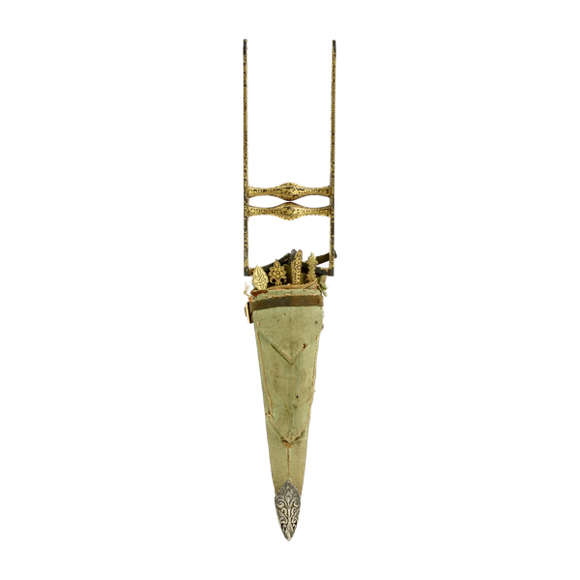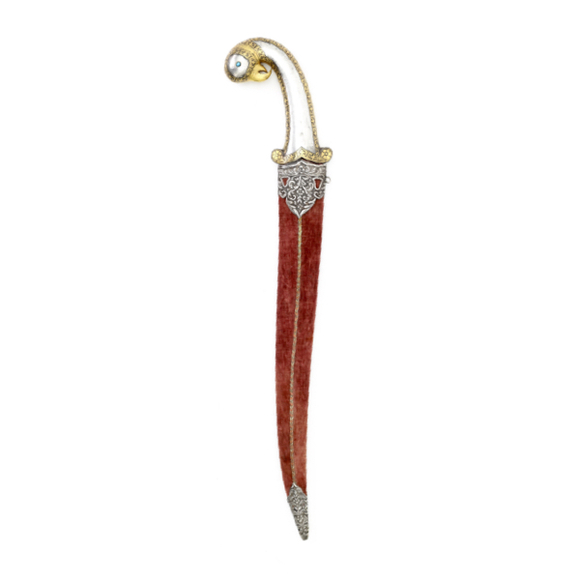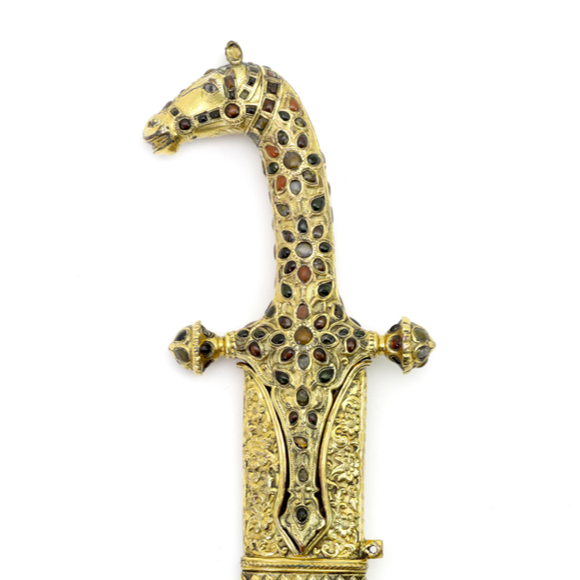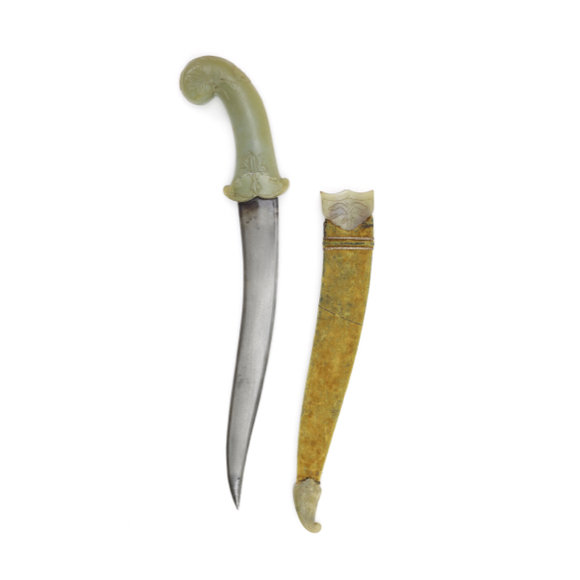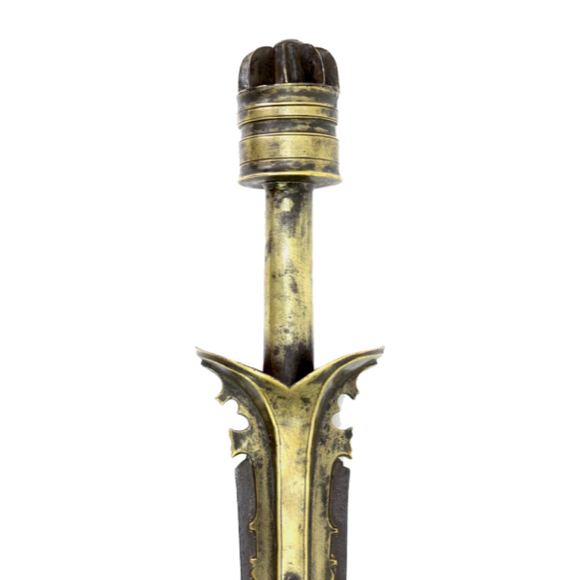With a fine wootz blade with a pronounced center ridge.

62 cm
16 cm diameter
736 grams
North India
19th century
European antique art market
Antelope horn, iron, brass.
The horn is from the "Blackbuck" or Antilope cervicapra.
Non-CITES listed.
Introduction
Māḍū (माडू) is the Marathi name for a type of Indian double dagger that consists of two antelope horns connected together, often tipped with steel points. Many have a small shield as well, that looks like a miniature version of the Indian ḍhāl (ढाल). Sometimes additional steel points are added.
According to the literature they were used by the Bhil people and remained in use by them at least up until the 1880s, but also by religious beggars like yogi and fakirs. Some swordsmen used one in the left hand as a parrying weapon, as one normally would use a regular ḍhāl. Alternative names found in the literature are márú, maduvu and singauta which Richard Burton thought was a Hindi term.
The name probably derives off the Marathi word māḍūḷa (माडूळ) / māḍhūḷa (माढूळ), defined as:
1. A species of snake, Amphisbæna.
2. A worm with two heads or mouths.
Most examples with provenance are from north India, most notably Datia, Lucknow and Delhi.
For more information, see my glossary article: Māḍū (माडू).
This example
An almost textbook example, consisting of two antelope horns connected side-by-side by means of iron pins that go through a brass cap at the end of each horn and through the other. The construction is remarkably sturdy, with no movement possible between the horns after all these years. Each horn was once tipped with an iron spearhead, one lost.
Riveted to one of the horns is a round base with four projecting beams on which a small circular iron shield is placed. This construction places the shield a little further from the hand, closer to the opponent, and so increases its protection without the need to enlarge it. Everything is quite tight, with only some minor plat between ring and horn.
The shield has a brass rim and four brass bosses, emulating the style of a full sized Indian ḍhāl.
The piece has a beautiful undisturbed patina throughout.




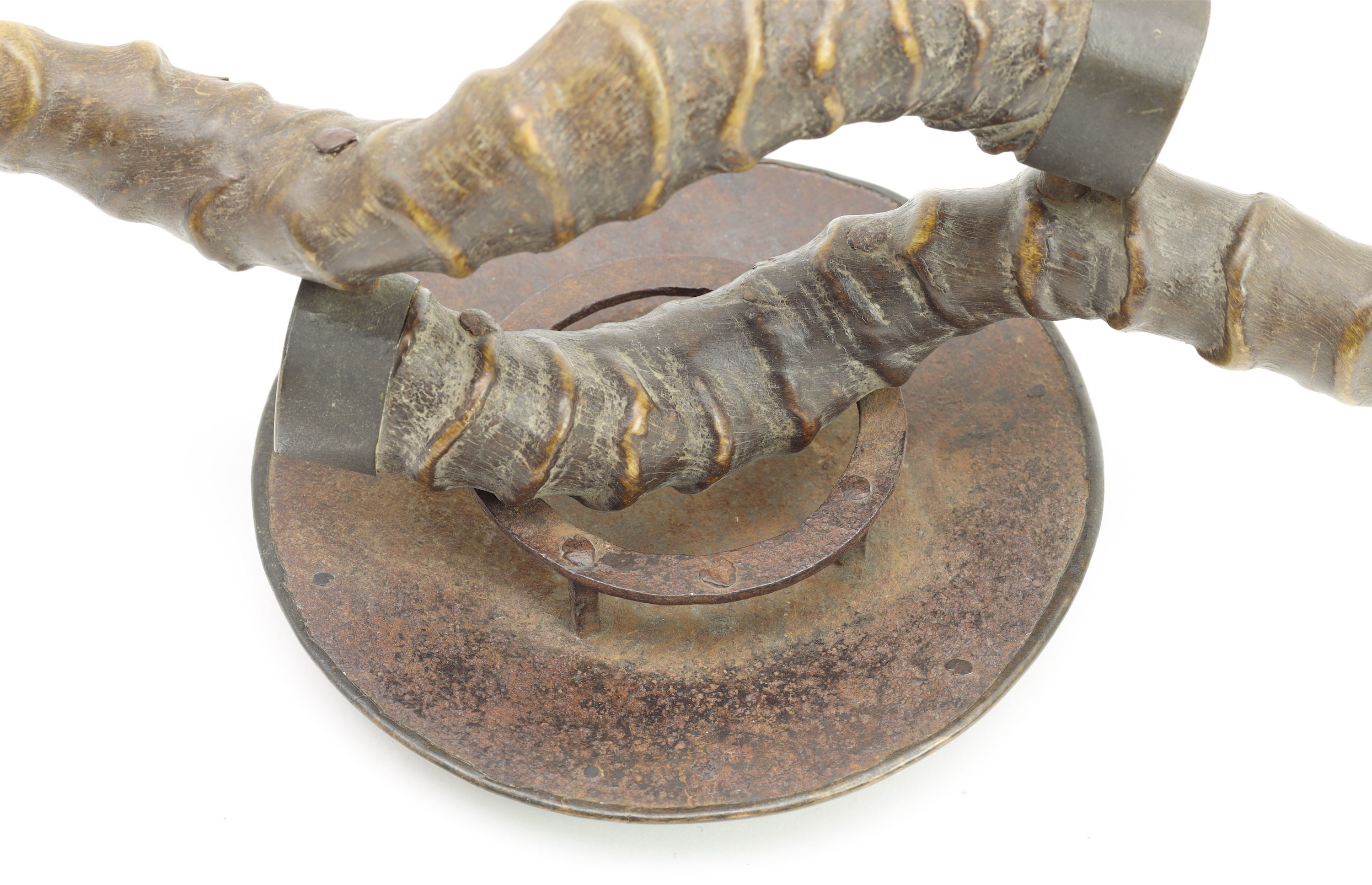






The style typical of Kutch, the execution far above what is normally seen on work from that area.
Nice and complete with opaque green hilt and scabbard mounts.
An early fighting piece with strong reinforcing langet and broad, cobra shaped tip.

